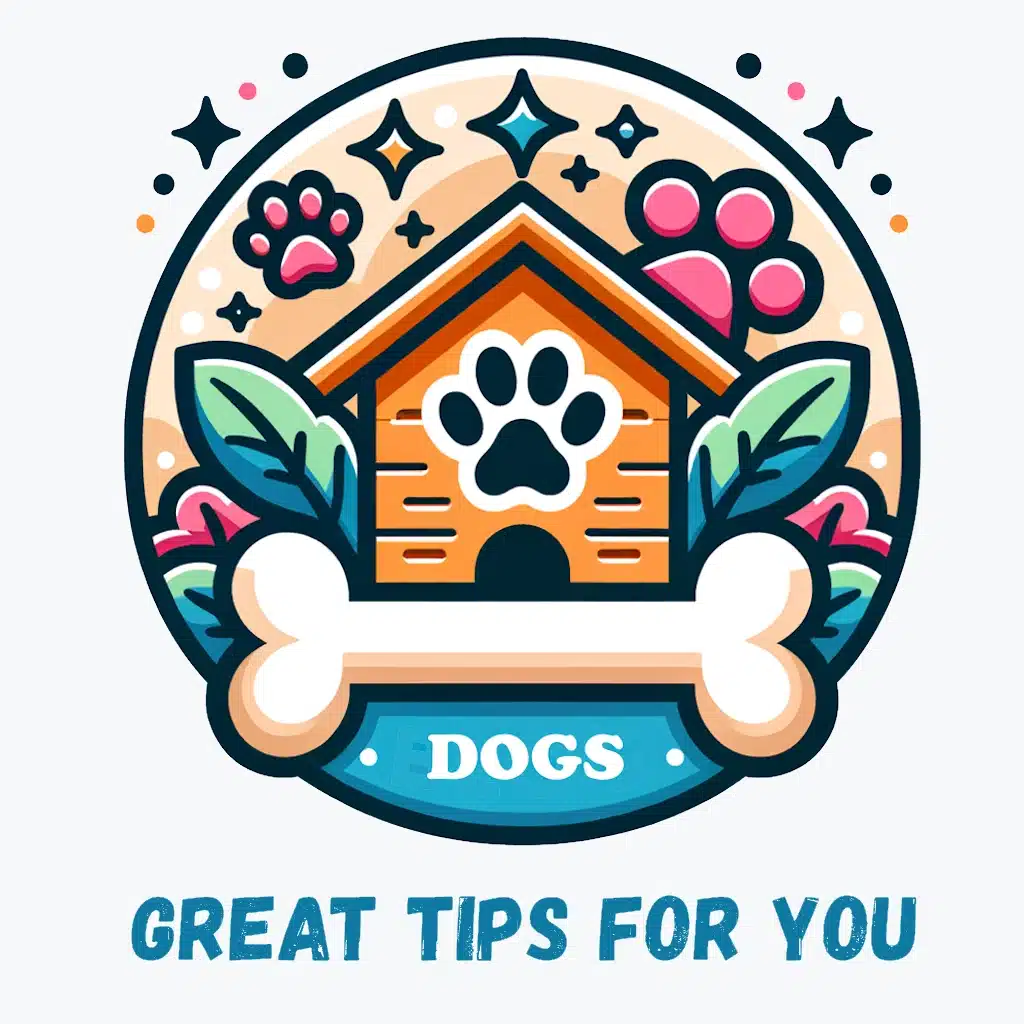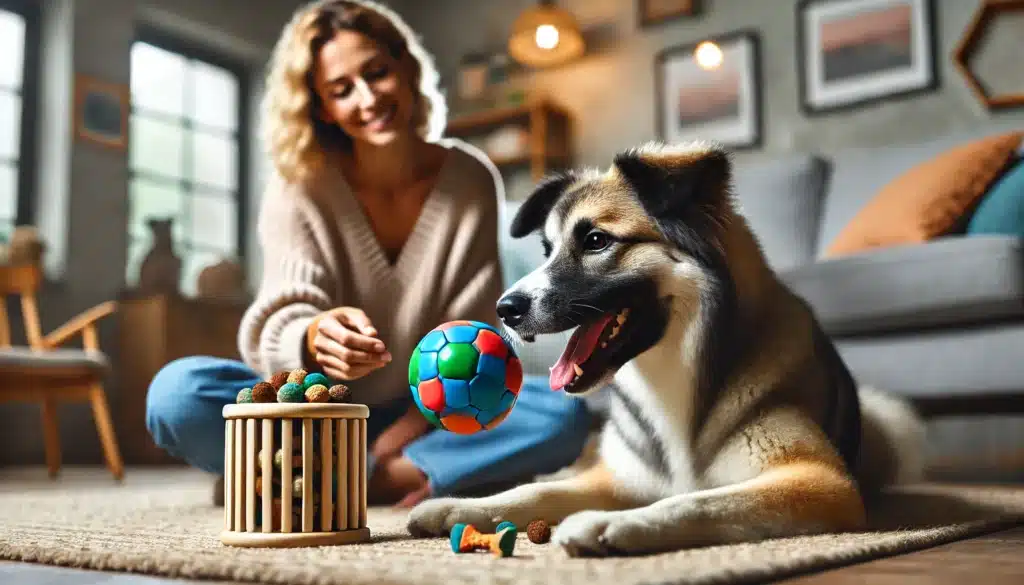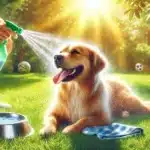If you’ve spent time researching dog behavior or training, you’ve probably come across the word “enrichment.” But what does it actually mean — and why is it essential for your dog’s health and happiness?
In this article, we’ll explore what enrichment is, the different types that benefit dogs, and how to easily incorporate enriching activities into your dog’s daily routine — no matter their age, breed, or living environment.
What Is Enrichment for Dogs?
Enrichment refers to activities, experiences, and environments that allow your dog to express natural behaviors, solve problems, and stay mentally and physically engaged.
It’s not about “entertainment” — it’s about satisfying core instincts like sniffing, chewing, foraging, chasing, digging, or socializing.
Think of enrichment as your dog’s version of:
- Reading a book
- Solving a puzzle
- Exploring a new place
- Playing a favorite game
It activates their brain, lowers stress, and supports overall well-being.
Why Is Enrichment So Important?
Modern dogs live in highly controlled environments — often indoors, on schedules, and with limited freedom to act on natural impulses. Without outlets for these instincts, dogs can become:
- Bored
- Anxious
- Destructive
- Overactive or withdrawn
- Prone to behavior issues
Enrichment provides healthy outlets that improve your dog’s mental health, emotional balance, and daily satisfaction.
Core Benefits of Enrichment
🧠 Mental Stimulation
Keeps your dog’s brain sharp and reduces boredom-driven behaviors like barking or chewing.
💪 Physical Exercise
Certain types of enrichment (like play or obstacle courses) offer healthy movement and energy release.
😌 Emotional Regulation
Enrichment lowers stress and anxiety, especially in nervous or reactive dogs.
🐾 Confidence Building
Solving puzzles or completing challenges builds resilience and confidence — great for shy or rescued dogs.
🤝 Bonding
Interactive enrichment strengthens your relationship through positive, shared experiences.
5 Main Types of Enrichment for Dogs
1. Food Enrichment
Turn meals into problem-solving sessions!
- Puzzle feeders
- Kongs stuffed with food
- Scatter feeding
- Snuffle mats
- Frozen treats
Makes mealtime more engaging and slows fast eaters.
2. Scent Enrichment
Stimulates your dog’s most powerful sense: smell.
- Hide treats around the house or yard
- “Find it” games
- Walks focused on sniffing (sniffaris)
- Scented toys or fabrics
- Beginner nose work activities
Sniffing = natural relaxation for dogs.
3. Cognitive Enrichment
Challenges your dog’s brain to think, solve, and make decisions.
- Training new tricks
- Problem-solving games
- Toy rotation
- “Which hand?” guessing games
- Object discrimination (learning names of toys)
Great for rainy days or limited-mobility dogs.
4. Physical Enrichment
Encourages movement, agility, and healthy play.
- Tug of war
- Fetch
- Obstacle courses
- Climbing on furniture or play equipment
- Walks in new locations
Even short daily movement boosts mood and fitness.
5. Social Enrichment
Supports your dog’s need for connection and communication.
- Playdates with other dogs
- Training sessions with you
- Visiting dog-friendly places
- Calm interactions with strangers (when appropriate)
- Grooming or massage (if your dog enjoys it)
Social dogs thrive on interaction — just be mindful of boundaries.
Signs Your Dog Needs More Enrichment
Is your dog showing signs of boredom or frustration?
Watch for:
- Excessive barking
- Chewing inappropriate items
- Pacing or restlessness
- Digging or escaping
- Whining or attention-seeking
- Hyperactivity indoors
- Lack of interest in play or people
These behaviors often signal mental under-stimulation, not disobedience.
How to Add Enrichment to Your Dog’s Day
🕐 Keep it simple:
- 10 minutes of nose work
- 5 minutes of trick training
- Food hidden in a rolled towel
- A Kong during your Zoom call
- A walk with plenty of sniff time
🧠 Mix it up:
Rotate games, toys, and routines to keep things novel and exciting.
⏳ Use short sessions:
You don’t need an hour — even 10–15 minutes a day can make a big difference.
🧸 Start small:
Begin with easy versions of puzzles and build up to more challenging ones.
💬 Involve your dog’s choices:
Let them decide how to interact — don’t force it. Observe what they enjoy and adjust accordingly.
Enrichment for Different Life Stages
🐶 Puppies:
- Short attention spans, so use simple food puzzles and brief play
- Gentle socialization and confidence-building
🐕 Adult Dogs:
- Combine physical and mental activities daily
- Use more challenging puzzles and structured training
🐾 Senior Dogs:
- Prioritize scent games and calm mental activities
- Low-impact physical tasks like gentle walks or indoor games
Final Thoughts: Enrichment Is Essential, Not Optional
Enrichment isn’t a luxury — it’s part of a healthy, happy life for your dog. By giving them ways to explore, play, and think every day, you’re not just preventing boredom — you’re fulfilling their deepest instincts and building a stronger, more balanced relationship.
So add a snuffle mat here, a puzzle toy there, and watch how your dog transforms — happier, calmer, and more connected to you than ever.







